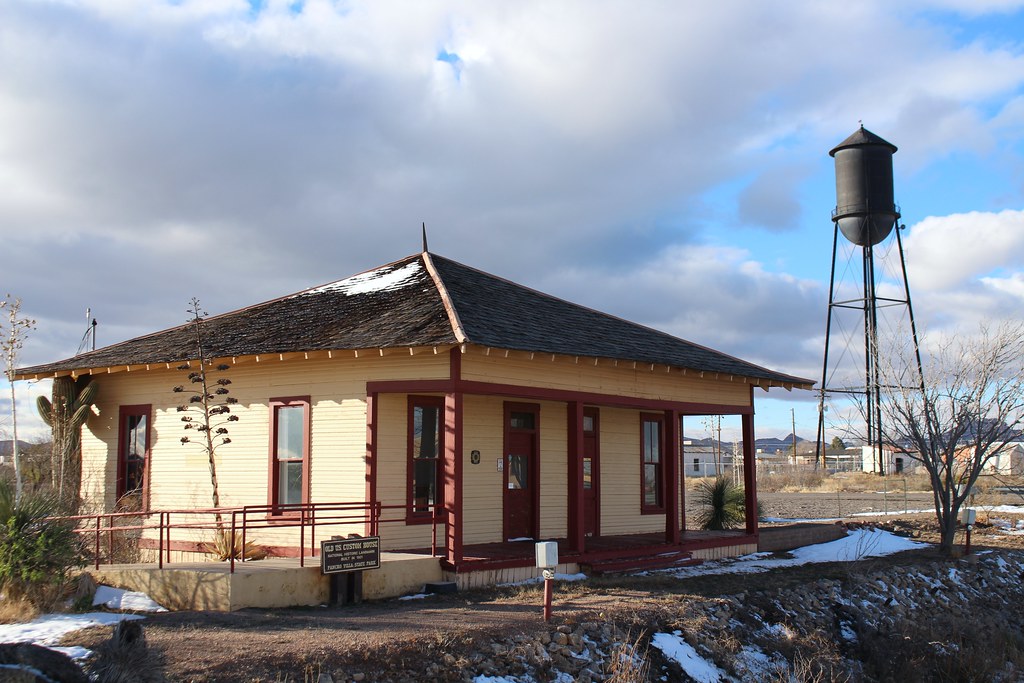All our talk of invasions, mostly imagined, got me thinking. What about the actual invasions of the United States? Oceans on either side certainly limited the possibilities and reduced the number of occurrences to a mere handful. So how many times have invaders assaulted the United States? As with much we discuss on the Twelve Mile Circle, the answer is a firm “it depends.” Historical facts are not in question, it’s the definition of “invasion” that varies amongst sources.
I’ll mention a few instances and let the Intertube masses decide. Feel free to add more if you like. Then I’ll talk about an oddball sort-of invasion in a little more detail.
The War of 1812

It’s probably unanimous that the United Kingdom invaded the United States during the War of 1812. Can I get an amen on that one? A British invasion force burned much of the U.S. capital, Francis Scott Key witnessed the bombardment of Fort McHenry and wrote the Start-Spangled Banner (map), Andrew Jackson won the Battle of New Orleans even after the negotiation of a peace treaty… I think most of us are aware of the basic iconography.
So the answer is that the United States has been invaded at least one time. Then it gets a bit sticky.
Other Possibilities
- Revolutionary War. I have a hard time comprehending a British invasion of anything. They were living in sovereign territory, going about their daily lives when a group of upstarts fomented an uprising. The British were simply attempting to hold onto colonies they’d controlled for a century and a half. Did they suddenly become invaders upon the American’s Declaration of Independence? The facts don’t convince me.
- Mexican-American War. Fighting moved onto locations that are part of the United States today but I think they were either Mexican territory proper or disputed lands at the time so it’s hard to categorize it as an invasion of U.S. soil.
- Civil War. I think a case could support that Confederate army forays into Union territory such as the Antietam Campaign [my visit] and the Gettysburg Campaign qualified as invasions. The counterargument is that it wasn’t truly an invasion by a foreign army. Neither the United States nor the international community recognized the Confederacy as a nation. To me this is an instance where it walked like a duck and talked like a duck, notwithstanding strict definitions.
- World War II. While often overlooked, I believe the Aleutian Islands Campaign could qualify as an invasion of the United States by Japan (versus Pearl Harbor which seems to be more of an “attack”). Japanese forces physically occupied the islands of Kiska and Attu. It took nearly a year for U.S. forces to dislodge them. I’ve seen sources that dismiss this claim because Alaska wasn’t a state at the time, it was a territory. Personally I find that ludicrous. That’s like saying the U.S. wasn’t attacked at Pearl Harbor because Hawaii was also a territory.
I’m sure there are others. What obvious ones am I missing?
The Outlier

Then we get to the curious case of the invasion of Columbus, New Mexico in 1916. There are a number of reasons why it might meet the technical definition of an invasion. Pancho Villa’s División del Norte certainly had all the hallmarks of an army. However, it was a belligerent force that did not represent the government of Mexico. Meanwhile the Mexican Revolution continued to rage. Villa had endured devastating loses in Mexico and saw easy pickings for resupply just over the border. He didn’t intend to capture U.S. territory. It seemed more of an act of desperation or resentment than of conquest.
A Pretty Feeble Invasion
Acting on bad intelligence, Villa completely underestimated the troop strength of the U.S. 13th Cavalry stationed at nearby Camp Furlong. Villa shot-up Columbus, killed a few people, burned some buildings, caused general confusion and mayhem, but he didn’t fare well once the U.S. Army understood what was happening. His quick raid turned into a full-blown battle and rout, with the Villistas at the receiving end of well-armed defenders with machine guns. They withdrew into Mexico, much worse for wear.
Legacy
The aftermath is rather more significant. U.S. President Woodrow Wilson ordered General John J. Pershing to lead several thousand troops into Mexico in attempt to capture Villa. They wandered through Mexico for about a year and fought a few skirmishes. They never did capture Pancho Villa. However, this marked the birth of the mechanized U.S. army: they used motorized trucks to create supply lines and airplanes to scout positions. Pershing and his troops would use these same lessons when the U.S. entered the First World War a few months later. In a sense, Pancho Villa provided a convenient training ground for a new style of warfare.
New Mexico commemorates the invasion of Columbus at Pancho Villa State Park, on the site of the original Camp Furlong. They claim that “this was the only ground invasion of the continental U.S. since 1812“. I’m not sure I’d go that far for all of the reasons and scenarios described above. It’s still a remarkable curiosity and I’d love to visit it someday.
It seems unusual to name a park after a foreign aggressor — I imagine it would feel downright offensive in just about any other context (e.g., thinking back to the controversy at Ground Zero in New York City) — but I suppose Pancho Villa has transformed into one of those romanticized mythical figures, larger than life. His name is a bigger tourist draw than if they’d called it Camp Furlong State Park, I suppose.

Leave a Reply